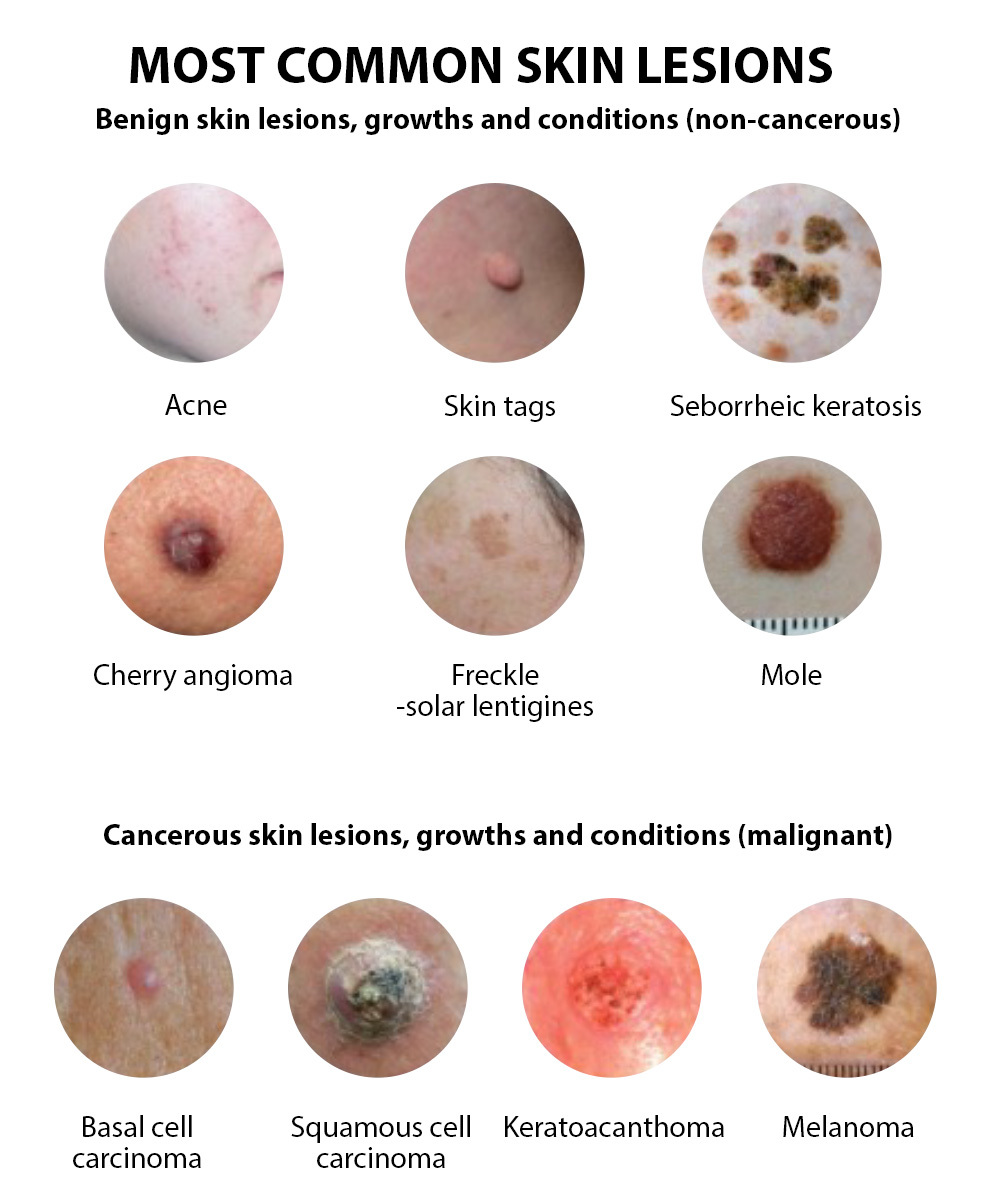What is a skin lesion?
A skin lesion is a part of the skin that has an abnormal growth or appearance compared to the skin around it.
There are two categories of skin lesions: primary and secondary.
Primary skin lesions are skin conditions present at birth or acquired over a person’s lifetime.
Secondary skin lesions develop from irritated or manipulated primary skin lesions. For example, if someone scratches a mole until it bleeds, the resulting lesion — the crust — is now a secondary skin lesion.

Types of skin lesions:
- Moles - a small dark growth which appears on your skin tends to appear in your childhood.
- Dermatofibroma - a firm, raised growth very often appears after an insect bite or minor injury.
- Actinic keratosis - a rough patch of skin developed from exposure from the sun.
- Seborrhoeic keratosis - a raised lesion that may appear on your body or on your scalp this is more common with age.
- Keratoacanthoma - a very fast growing lesion which tends to be solid and usually forms on the face this is also from exposure from the sun.
- Skin Tags - a growth usually forms where your skin creases or gets rubbed.
- Pyogenic granuloma - A small, bright red growth forms most commonly after an injury, occasionally it bleeds and will get removed.
- Sebaceous cyst - lumps that can become infected these can range in size.
- Warts - small lumps caused by infection with the human papilloma virus (HPV)
It’s important to see your GP if you notice any new changes to your skin, especially if it's a change in the size, shape or colour of a mole.
What happens during an excision of a skin lesion?
Once the area has been examined the area around the lesion will be cleaned with anti- bacterial solution to limit any risk of infection.
To remove the lesion and for a skin biopsy to be taken the whole skin lesion is to be cut out and removed. A cut will be made into the skin and cut out the whole of the lesion and maybe some of your normal skin around the edge. This will then allow for stitching and healing. This is usually done under local anaesthetic to stop any pain.
How long does it take to recover from a skin lesion?
You will be able to go home the same day as your procedure; you will just need a follow up with the nurses to check the wound at a later date.
It might take a couple of weeks for your wound to heal. You will be informed on the day of your surgery if you need any stitches removing.
You may notice after a couple of weeks; once healed and the scab has fallen off that your skin may either be lighter or darker. This is normal and will return to normal colour over time.
Your doctor or nurse will give you specific advice relating to the type of procedure you've had. They may also ask you to:
- avoid touching or scratching the affected area, particularly if you've had stitches
- keep the wound dry for 48 hours or until dressings have been removed, then clean gently every day
- avoid picking scabs that form or doing anything to accidentally dislodge them
Contact us
Should you wish to consult Mr Lingam about your skin lesion, please send an email to mklingam.sec@gmail.com or call:
Derby Nuffield on 01332 540100
Derby Private Suite on 01332 786128
Mr Lingam consults at the Derby Nuffield on Tuesday AM, Wednesday and Friday PM and at Derby Private Suite on a Thursday PM.
